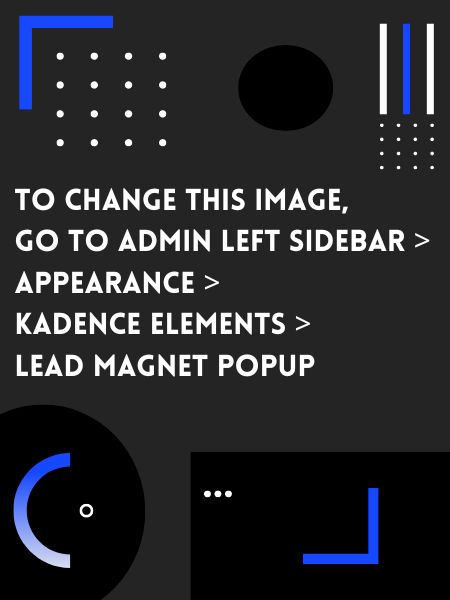In February/March 2016 SAVE THE FROGS! Founder Dr. Kerry Kriger spent seven days frogging the Peruvian Andes and Amazon. He photographed 31 amphibian species. Here is his story…
I had wanted to visit Peru’s Manu National Park since 1999, when I first heard about Manu’s incredible biodiversity. Encompassing both the Andean cloud forests and the Amazon rain forest, Manu is one of the most amphibious places on Earth, with over 150 known amphibian species. Earlier this year a Board Member of the Amazon Conservation Association (ACA) contacted me suggesting I visit the ACA’s biological stations in Manu, to which I replied “YES! If you can fly me there I would love to.” So with his generous assistance I flew from Santiago, Chile to Cusco, Peru on February 26th, 2016. I spent two days acclimatizing to Cusco’s high altitude (3,475m) and visiting old archeological sites above the city.
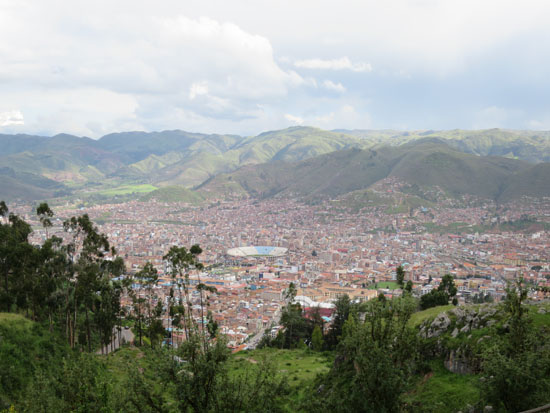
Cusco from above

Saqsaywaman ruins and alpaca, above Cusco
Frogging Peru Day 1
On Sunday morning February 28th (Frogging Peru Day 1) I met up with Dr. Alessandro Catenazzi, a Swiss-Peruvian amphibian biologist and assistant professor at Southern Illinois University, and his two Peruvian field assistants Alex Ttito and Valia Herrera Alva. We headed east out of Cusco in an old 4WD. Our destination was the ACA’s Wayqecha Cloud Forest Biological Station, about four hours away. We wound up some mountain roads and came to Ninamarca, a beautiful archeological site on top of a mountain ridge.
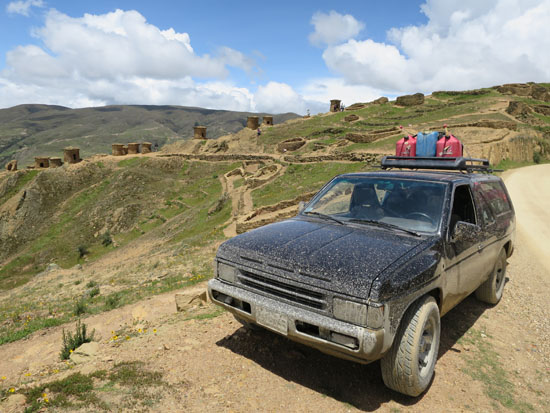
Our vehicle at Ninamarca
We came down a steep mountain road to Paucartambo, the last town before the Amazon basin, still another four hours distant. I bought a mango and bananas and we continued on our way.
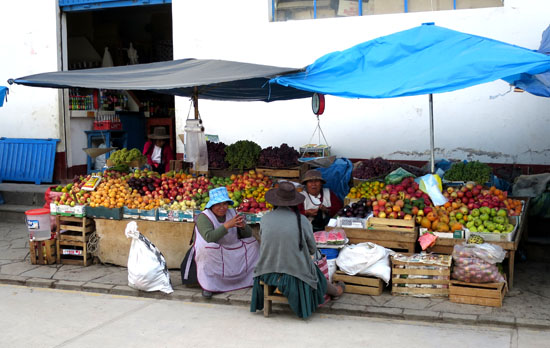
Paucartambo fruit vendors
We climbed up the mountain and soon hit a cloud covered ridge where the previously barren hillsides gave way to cloud forest. The cloud was thick for the next hour. The road was muddy. There was a huge cliff off to the left that dropped off at least a thousand feet.
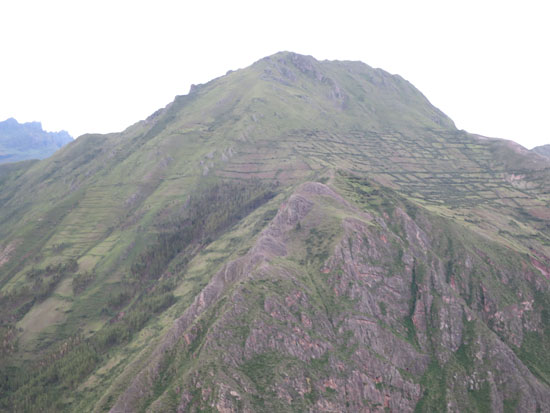
Mountain scenery
I asked Alessandro if vehicles ever go over the edge. He thought for a moment and said a bus went over two weeks ago. I asked if everybody died. He said “No, just two people.” We arrived safely at our destination, Wayqecha, and had lunch in the new dining hall.
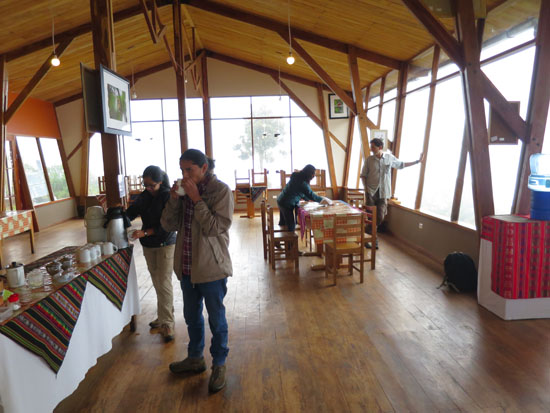
Wayqecha Biological Station’s dining area
Wayqecha is in the Andes at 2,900m and as expected was quite cool, especially with the mist blowing through. After dinner we drove ten minutes down the road to find frogs. On one side of the road is the Wayqecha reserve and the other is Manu National Park. Most of the mountain valleys that connect the Andes to the Amazon have no roads and are virtually inaccessible. This valley (the Kosñipata) is one of the few catchments that have continuous forest all the way from tree line (around 3,000m) down to the Amazon basin as well as road accessibility. As such, the Kosñipata Valley is a perfect place to study how amphibian communities change with altitude. Alessandro has been monitoring amphibians along this road for the past twenty years, and has walked the entire 80km from Wayqecha to the Amazon Basin below.
We walked a kilometer stretch of road and found three species: Oreobates gemcare, Gastrotheca nebulanastes and Pristimantis pharangobates. We also heard the glass frog Centrolene sabini.
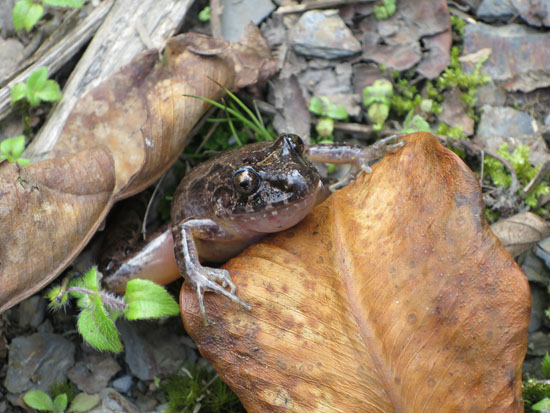
Oreobates gemcare
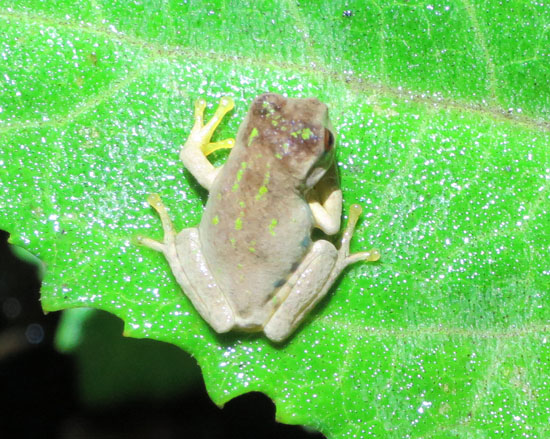
Gastrotheca nebulanastes
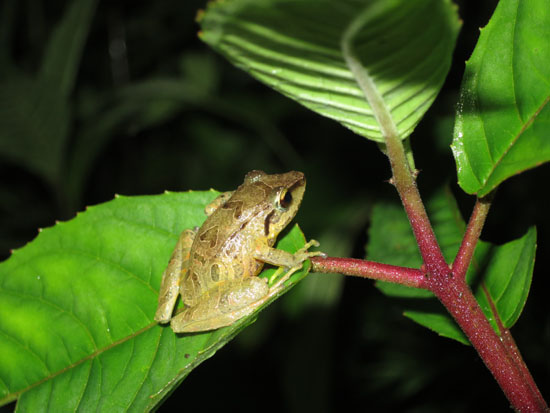
Pristimantis pharangobates
The rain started coming down as we walked back to our vehicle. Alessandro and his assistants swabbed the frogs to check for chytrid fungus (Batrachochytrium dendrobatidis), which has wreaked havoc on montane amphibian populations throughout the world, and especially in the Andes, where it has driven many species to complete extinction. We returned to Wayqecha and got to sleep around 1am.
“Dearest Dr. Kriger,
It’s a thrill to read about you, in a faraway land and probably remote area of Peru, dedicating your time and energy to promote and protect the well-being of our common interest, frogs. Thank you sounding the alarm of their protection and to continue to be their best hope for survival for our generation and generations to come. I am in awe of your dedication.”
— Linda Elizabeth, Montreal, Canada
FROGGING PERU DAY 2
Having been in a cloud the entire day prior, I was happy to awake with an expansive view of the Andes mountains covered in cloud forest, and the valleys dropping off into the Amazon basin far in the distance.
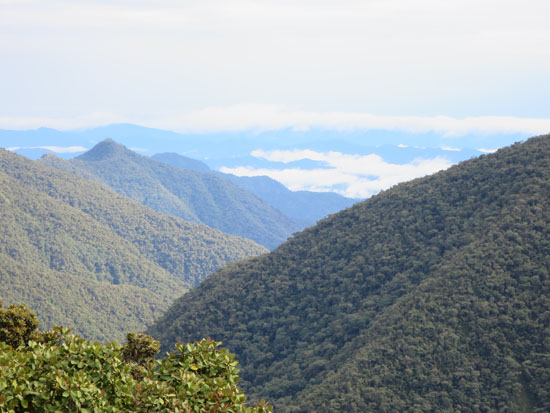
View from Wayqecha over the Kosnipata Valley and down to the Amazon
We took it easy in the morning and around 2pm we got back in the vehicle and began our descent to the Amazon basin. Our destination was the ACA’s Villa Carmen biological station, which preserves a large tract of regenerating rainforest that sits at the base of the Andes (430m above sea level), between two rivers (the Kosnipata and the Pinipini). The drive from Wayqecha to Villa Carmen is normally three hours but we had about seven stops along our path, to look for frogs and salamanders and to install data loggers and call recorders. The data loggers gather climatic data and the call recorders automatically record for five minutes every hour of the day. One of our first stops was at a beautiful waterfall in Manu National Park at 2,400m above sea level:
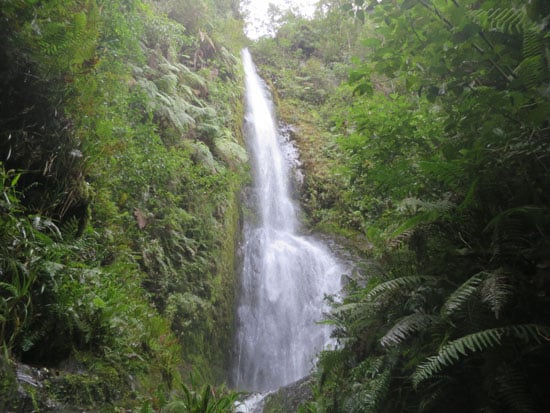
Waterfall in Manu National Park, Peru
Unfortunately three amphibian species that were once common at the waterfall haven’t been seen at the falls in years:
Nymphargus pluvialis, last seen 1999
Hyloscirtus armatus, last seen 2009
Telmatobius mendelsoni, last seen 2007
We continued down the road, and at 1,600m passed a stream where Atelopus tricolor used to live. I asked Alessandro where in Peru you can still find Atelopus, to which he replied nowhere in Manu, but there are several species that still occur in other parts of Peru (mostly Amazon lowlands and drier, Pacific slopes of the Andes in northern Peru). Atelopus were once common on mountain streams throughout the Andes, and due to their diurnal lifestyle and often bright colors, they were easy to spot. Atelopus have suffered more severe population declines than any other genus of frogs. Only 10% of the 110+ species of Atelopus are thought to have stable populations.
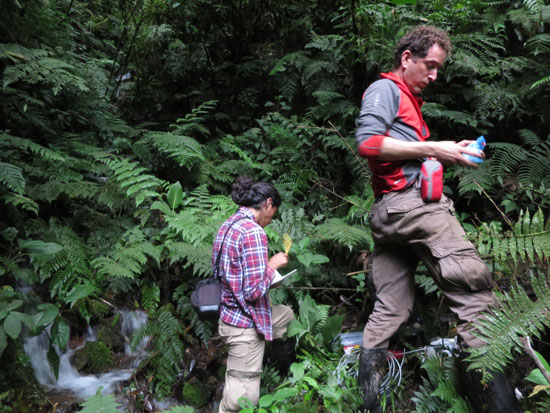
Alessandro (right) and Alex (left) at a stream where Atelopus erythropus used to live. The glass frog Hyalinobatrachium bergeri still lives here.
At 1,500m we heard Oreobates granulosus calling, and at 1,300m we passed the spot where the poison dart frog Allobates alessandroi (named after Alessandro) was last seen in 1999. At 1,200m we passed the type locality of a recently identified Pristimantis species that Alessandro is in the process of describing. Even in the dry season, it tends to rain at this elevation every day, contributing to the four meters or so of annual precipitation it receives, twice that of the Amazon rainforest below. Alessandro said that 100km further south is one of the wettest places in South America. At 900m while searching for Bolitoglossa salamanders, I found a beautiful toad (Rhinella margaritifera) sitting atop a plant.
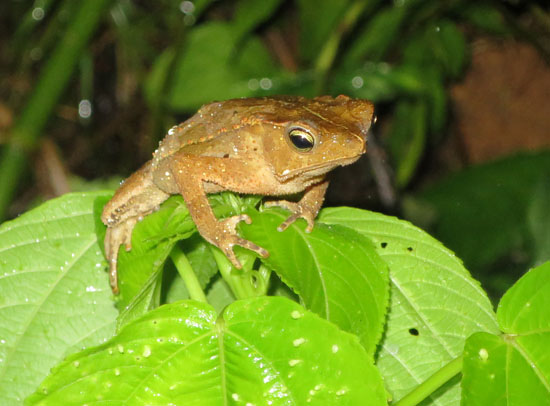
Rhinella margaritifera
A National Geographic expedition conducted a bioblitz in this area in 1992 and found many caecilians (limbless amphibians) near here, but the species has never been seen since. We finally arrived at the base of the mountains (560m), in the Amazon Basin. We passed the town of Pilcopata and heard Leptodactylus didymus calling. We arrived at our destination (the ACA’s Villa Carmen biological station) shortly after 8pm, had dinner and headed out to find more frogs.
We followed a stream and started hiking uphill. The rain was coming down pretty hard so we stopped under some thick trees, hoping for it to subside. It didn’t, so we kept hiking, crossing a deep mud puddle by walking on some fallen bamboo that was acting as a mini-bridge. We hadn’t seen a single frog or salamander on this hike, likely because the rain was too strong even for amphibians to enjoy. We walked quickly the last couple hundred meters to arrive at our destination, a pond that is home to monkey frogs (Phyllomedusa vaillanti) and treefrogs. There was one treefrog calling but no monkey frogs calling. I didn’t see either (until two nights later, which was one of the most frog-filled nights of my entire life!). We headed home and fell asleep around 2am to the sound of cane toads.
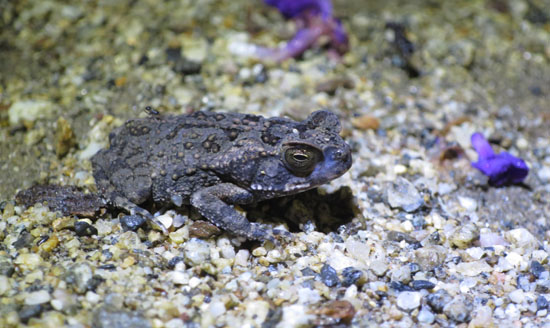
Juvenile cane toad
Stay tuned for Frogging Peru Nights 3 & 4!


